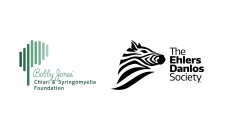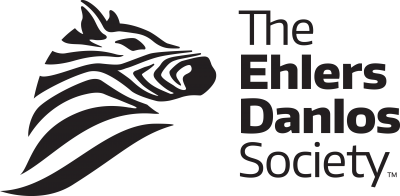The Bobby Jones Chiari & Syringomyelia Foundation and The Ehlers-Danlos Society to Host 'Diagnosis and Management of Syndromes of the Craniocervical Junction and Roundtable Discussion' at The Royal Society of Medicine, London, UK

LONDON, August 16, 2019 (Newswire.com) - The situation in the U.K. for those living with Chiari malformation and cervical instability has been extremely challenging, with delays in diagnosis, lack of access to MRI imaging, treatment and care, and many needing to self-fundraise to travel abroad for surgery.
The Ehlers-Danlos Society is delighted to be partnering with The Bobby Jones Chiari & Syringomyelia Foundation to bring together a day of global experts to talk about the current knowledge and understanding in surgical and conservative management recommendations for hypermobile patients with these issues. They hope that this encourages a way forward for patients living with these conditions in the U.K., that treatment, management and care could be an option.
Both organizations have been working internationally to improve the care and management in these areas and are excited to bring their experience to London at The Royal Society of Medicine on Sept. 13, 2019.
The Ehlers-Danlos Society alongside Bobby Jones Chiari & Syringomyelia Foundation are delighted to invite health professionals and medical students to register for the event, entitled "Diagnosis and Management of Syndromes of the Craniocervical Junction and Roundtable Discussion," Friday, Sept. 13, 9:00 a.m.-5:00 p.m. at The Royal Society Medicine London,1, Wimpole Street, London W1G 0AE. Click here to register with the registration password: RSMLONDON
About Chiari
A Chiari malformation (CM) is a structural defect in the area of the brain responsible for controlling balance i.e., the cerebellum. Specifically, when a portion of the cerebellum, known as the cerebellar tonsils, is situated under the funnel-shaped opening to the spinal canal (the foramen magnum).
Chiari malformation is categorized as Type I, Type II, Type III, and Type IV. These “types” are assigned on the basis of the anatomy of the brain tissue pushed into the spinal canal and whether developmental abnormalities of the brain or spine exist. They are not named according to increasing severity but are—instead— four distinct and different anomalies of the hindbrain.
In Chiari I, the cerebellar tonsils can interfere with the movement of cerebrospinal fluid (CSF) between the skull and spinal canal. This interference can result in the collection of cerebrospinal fluid in the subarachnoid spaces of the brain and spine. The resulting increase in pressure on the brain and spinal cord from the accumulation of cerebrospinal fluid can lead to hydrocephalus, which manifests in a wide range of symptoms.
By contrast, for people without Chiari I, the cerebellum is situated above the foramen magnum and within the base of the skull i.e. the posterior fossa. An abnormality in the shape or size of a part of the skull pushes the cerebellum down, resulting in the Chiari malformation. The aberration in shape or size of the skull is related to exposure to hazardous substances, infection, illegal drug or alcohol use, genetic mutations or a maternal diet deficient in certain nutrients.
Some experts have also identified the existence of a Chiari Type 0, where symptoms or cerebellar compression exist with little to no radiographic evidence on an MRI.
What are the symptoms of Chiari?
- Vision-related problems (double vision, blurred vision, involuntary eye movements, excessive sensitivity to bright lights)
- Numbness
- Muscle weakness
- Stiffness or pain in the neck or the back of the head. The discomfort grows worse with coughing or sneezing
- Cranial nerve compression leading to apnea, and swallowing difficulties
- Diminished arm strength
- Diminished sensation in the arms and legs
- Issues with balance and coordination
About the Ehlers-Danlos syndromes and hypermobility spectrum disorders
The Ehlers-Danlos syndromes (EDS) are a group of 13 heritable connective tissue gene disorders that produce a spectrum of complex problems across multiple systems of the body. The physical characteristics that are common to all types of EDS include hypermobile joints, skin hyperextensibility and tissue fragility. EDS is known to affect more than one in 5,000 men and women of every race and ethnicity.
Each person’s case of Ehlers-Danlos syndrome is unique. Severity may range dramatically, even within families. Prognosis depends on the type of Ehlers-Danlos syndrome and the individual.
Hypermobile Ehlers-Danlos Syndrome (hEDS)
Hypermobile EDS (hEDS) typically begins with extreme joint hypermobility, joints that can stretch beyond normal limits; a propensity for sprains, strains, subluxations and dislocations; pain, often in lower limbs, and with fine motor or repetitive tasks; and easy fatigability.
Although each person with hEDS faces their own set of problems out of the wide range of possible effects, hEDS generally evolves. The initial “hypermobility” phase may involve the ability to hyperextend various body parts to extremes normally attributed to contortionists, gymnasts or elite dancers. Over time, the extreme hypermobility and connective tissue instability of hypermobile EDS may lead to permanent injuries. The “pain” phase involves widespread and worsening pain and headaches, pelvic pain in women, and worsened fatigue. The “stiffness” phase seen in some adults and in the elderly results in general reduction in joint hypermobility, significant losses in functionality because of disabling pain and fatigue, and increased limitations due to reduced muscle mass and weakness, prior injuries and arthritis.
While certain features of hypermobile EDS are not yet in the diagnostic criteria — as more research is needed to prove causation and the relationships between the hEDS and potential comorbidities — clinical descriptions of hEDS have expanded beyond joint hypermobility to include: chronic pain and fatigue, gastrointestinal disorders, neurological issues, dysautonomia, and anxiety. As of this time, hypermobile EDS has no identified distinctive cause.
Hypermobility Spectrum Disorders (HSD)
The hypermobility spectrum disorders (HSD) describe patients with symptomatic joint hypermobility not corresponding to other known conditions. The spectrum of HSD ranges from secondary musculoskeletal manifestations and a simplified categorization of genetic syndromes featuring joint hypermobility.
Vascular Ehlers-Danlos Syndrome (vEDS)
Life expectancy can be significantly shortened for those with the Vascular Ehlers-Danlos syndrome (vEDS) due to the potential for organ and/or blood vessel rupture. While significantly diminished life expectancy is not usually a factor in the other types, quality of life can be severely affected by chronic pain, disability, and myriad comorbidities. There are no cures for the Ehlers-Danlos syndromes, but there are treatments that address many symptoms and preventative measures that may help slow their progression.
About The Ehlers-Danlos Society
The Ehlers-Danlos Society is a global community of patients, caregivers, health care professionals, and supporters, dedicated to saving and improving the lives of those affected by the Ehlers-Danlos syndromes.
Headquartered in Baltimore, MD, The Ehlers-Danlos Society is a registered 501c3 nonprofit organization in the United States and a registered charity in the United Kingdom.
The Ehlers-Danlos Society staff team has now grown to 18 members of staff across the world, proudly working to provide global learning conferences, collaborative research and education initiatives, awareness campaigns, advocacy, community-building, and care for the EDS and HSD population.
About Bobby Jones Society
The Bobby Jones Society was created to recognize superior philanthropic support for the mission of CSF. Our Board of Trustees head this society and provide a high level of strategic guidance to ensure that CSF meets its fiscal goals. The Board of Trustees is composed of successful business executives from around the country who donate their time, financial resources and participate in the development and implementation of plans and goals for CSF.
Source: The Ehlers-Danlos Society
